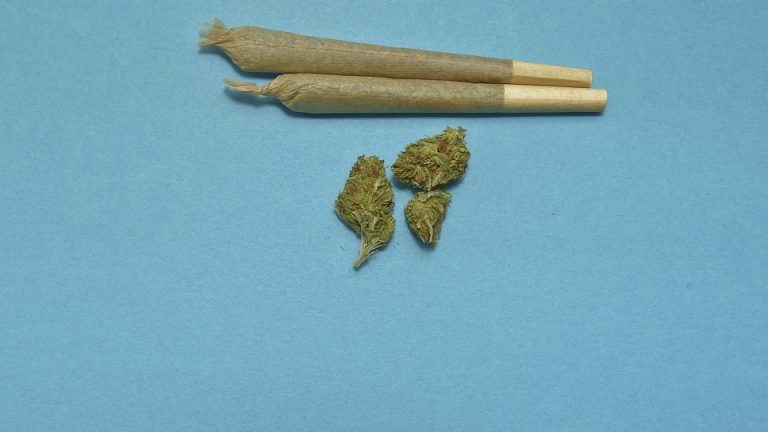Cannabis used to be a heavily demonized drug associated with crime, poverty, and anti-social behavior. Some people still hold the “stoner” stereotype about weed users, which is pretty far from the contemporary reality surrounding cannabis consumption.
As years have passed, many countries, including the USA, have embraced weed’s medicinal properties and legalized it for medicinal and recreational purposes. Thus, many eligible users can now approach a weed dispensary and choose a product for themselves, depending on their medical needs and experience level.

But here comes the problem; while legalization is in full swing, and more people get access to weed-infused products without restrictions, more education is needed on the right product choice. A wrongly picked weed strain can cause an opposite effect on the consumer and even worsen their health issues; thus, competent advice and wise dosing are essential for a positive user experience. Here is a detailed guide on the considerations driving your cannabis product choice and dosing.
Considerations for Cannabis Product Choice
How to choose weed properly? The market is full of various offers, each claiming to be the best for all medical conditions and user types. Still, you should approach the choice wisely and cautiously, as cannabis is a psychoactive herb with a realm of effects. Thus, you can derive greater health benefits from it if you pick an optimal variety.
Type of Medical Condition
The first thing you should think about is the purpose of using cannabis. What problem do you want to address? Is it chronic pain or anxiety? Are you suffering from a lack of appetite or experiencing nausea because of chemotherapy? Do you want to increase your sleep quality or to have more energy for the coming day? Answers to these questions can guide you through the choice process.
It is vital to be honest at this point, as various cannabis strains produce opposite effects on the user, from a deeply sedating effect to energizing and giggly sensations. Thus, it would be a shame to experience a couch-locking effect instead of a cheerful party or to aggravate your depression symptoms with a sedating strain.
At this point, you need to distinguish between Indica-dominant and Sativa-dominant weed. While Indica is famous for pain relief, sedation, and relaxation, Sativa strains are commonly associated with a euphoric, energizing, and uplifting feeling. Thus, Sativa weed is good for daytime use, while Indica is more recommended for the evening hours, before bedtime. You should remember these distinctions when purchasing weed for specific purposes; for example, if you have insomnia, it’s better to opt for a high-quality Indica and relax before bedtime. If you’re anxious and depressed, a bit of Sativa will be of help to you.
THC vs. CBD
The next point to consider is the THC and CBD concentration you want to have in your product. The THC content in THC-containing products is an important point for consideration, as THC is a psychoactive compound that hits newbies pretty hard. Thus, it is vital to calculate the dose precisely while you’re still new and not too immune to the THC impact. For those who want to learn how long does it take for THC tolerance to lower, https://askgrowers.com/blog/cannabis-tolerance-and-addiction-understanding-the-difference will be of much help.
Apart from THC, you should consider CBD content in your pick. Do you want CBD-rich products to soothe pain, reduce anxiety, and battle everyday stresses? Some users opt for CBD-only weed options, which is also okay in therapeutic terms. THC is a powerful cannabinoid with painkilling properties, but it’s psychoactive, which not everyone likes. Thus, it may be more suitable to avoid THC and enjoy the best ways to consume CBD to reap various health benefits without intoxication.
Type of Cannabis Administration
Now, it’s time to decide on the method of cannabis use you want to go for. The times of weed smoking are long gone; at least, people who don’t want to smoke the weed flower have a variety of other options. Besides the traditional joints or bongs for inhaling cannabis vapor, you may choose a more discrete variant – a vaping pen. Otherwise, you may try edibles, CBD-infused drinks, weed-infused desserts, oils, and tinctures. All variants are available in the modern cannabis market, with various THC and CBD concentrations for your choosing.
The Terpene Profile
Another essential point in the choice of cannabis products is their terpene profile. It’s well-known that terpenes are secondary but mighty components in cannabis products, which also affect your user experience. Terpenes are responsible for the nuances of effects you get from weed use. Thus, if you want a more uplifting or stimulating strain or opt for a relaxing and calming experience, it’s better to take a closer look at the terpenes instead of focusing only on THC and CBD rates.

The Dosing Dilemma
The following point at which you may stumble at first is the choice of proper dosing. Even if you’re clear about what product you want to use, each item comes with various doses meant for users with varying experience levels. Thus, it is very important to consider your dose carefully so that you don’t end up overdosing or having side effects. Dosing is hard to calculate precisely without trial and error, as the individual effects of weed differ from person to person, with tolerance and chemovariance coming into play. Still, some general recommendations are available in this regard:
- The total amount of cannabinoids for complete beginners should be around 2.5mg.
- For patients with chronic pain, a regular dose involves 40mg of CBD per day (if the patients don’t use THC), with a typical regimen of 2.5-5mg of THC and CBD once or twice a day to achieve sustainable pain relief outcomes.
- Those who want to experience a cerebral high from using weed should opt for the CBD:THC ratio of 2:1. If it works fine for them, they can transition to the 1:1 ratio, which will give a more pronounced high.
- People with inflammation may need longer-acting weed products to keep them feeling well for longer periods. Weed-infused edibles (whether with or without THC) may be an optimal choice for this category of patients.
- Individuals suffering from acute pain and requiring one-time pain-soothing treatments can use topical products with CBD. These products will work well to ease the pain and won’t cause any psychoactive effect, so they are suitable for everyone and don’t impair people’s activities.
Final Tip: Getting Acquainted with Cannabis
As you can see, starting with cannabis may be tricky, as the choice of products and dosing takes time and effort. Thus, a pro tip for complete rookies is to test their cannabis tolerance with a low-dose edible to understand whether cannabis is generally okay for them regarding its effects. It’s a good idea to take a 5mg cannabis edible (even less will do) and wait for the weed to take effect. If you start with smoking products, follow the golden rule “start low and go slow,” which means taking a pull and then waiting some time to feel the onset of the effect. This way, users can avoid overdosing and prevent unpleasant sensations during cannabis use, deriving maximum health value from this herb.
